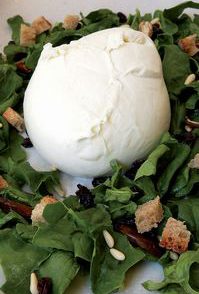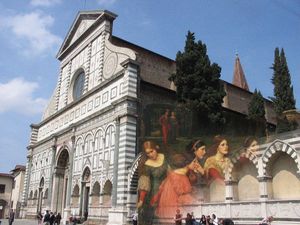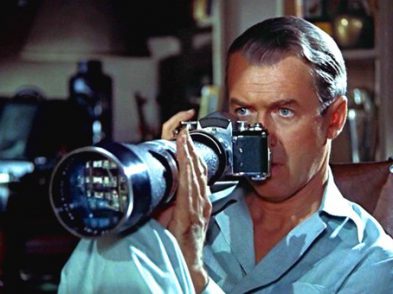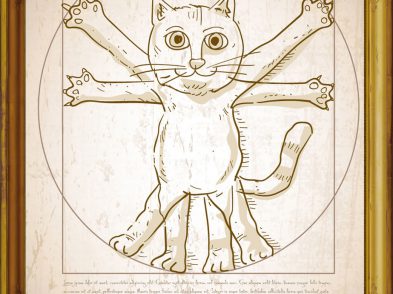It is almost impossible to walk a block through the center of Florence without catching a glimpse of one of the city’s most-loved, iconic, revenue-inducing images: Michelangelo’s David. Copies come in nearly every desired, or perhaps undesired, shape and size, from puzzles to vaguely obscene postcards. The most famous copy of them all towers over admiring tour groups at his post in the Piazza della Signoria, maintaining the watch that his predecessor, the ‘real’ David, abandoned.
The original’s abdication of his throne was, of course, not by choice. Despite a relatively peaceful life, centuries of exposure to the elements began to achieve what Goliath could not, and the beloved statue’s health started to decline. David’s 1873 move to the Accademia delle Belle Arti marked the birth of the modern practice of conserving statues by bringing them inside and replacing them with copies.
David was only one of the hosts of outdoor, movable statuary that is particularly susceptible to adverse atmospheric conditions. Since the advent of the Industrial Revolution, environmental conditions have deteriorated enormously, causing certain types of decay to accelerate drastically and conservation issues to grow increasingly pressing.
Any decision involving these monumental works is inevitably highly complex, necessitating input by professionals from a variety of fields, from chemists to conservation specialists to the city government officials. The health of the work is the most important element of any decision, but economic issues also play a role. Sponsorship from private individuals or organizations, an important supplement to government funding, tends to go to well-known masterpieces, while lesser-known, but often more needy, artworks remain ignored.
Enter groups like Friends of Florence. Such not-for-profit foundations work ‘to encourage individuals and private foundations to participate in the restoration and preservation of the innumerable artistic and cultural treasures located in Tuscany, and, in particular, Florence’, says Countess Simonetta Brandolini d’Adda, the organization’s indefatigable founder and president. Since its conception, this generous organization has undertaken numerous campaigns around the city. Those who stroll daily through the Piazza della Signoria will particularly appreciate Friends of Florence’s first major project, the 2002 restoration of the marble statues within the Loggia dei Lanzi.
The Friends of Florence and similar organizations are critically important because conservation is a long, complex, and costly process. Much time is spent scientifically analyzing the work to ensure that the proposed conservation method will not cause further damage and will be as reversible as possible. ‘One of the most necessary decisions in modern conservation’, says professor Diane Kunzelman, a painting restorer at the Laboratorio di Restauro of the Opificio delle Pietre Dure, ‘is reversibility. Any conservation practice must be made to be conservable and treatable’.
Restored statues are generally brought inside and replaced with impressively accurate copies. No longer hand carved, nowadays even marble reproductions are cast from a mold made of the original. There are, however, notable exceptions. In 2000, Cellini’s Perseus Holding the Head of Medusa was released back into his native habitat under the Loggia after his restoration, with a water-proofing material protecting his newly cleaned surface and periodic checks are made to ensure his continuing good health.
Despite Perseus’ availability for public viewing, his position near the copy of Michelangelo’s David deflects much deserved attention from this magnificent original. Perhaps many simply assume Perseus, like David, is another copy, for the distinction between originals and copies is not so easy to make. Without prior knowledge, there is no reason that casual tourists would know that the statues adorning the niches of Orsanmichele are copies, as the replacements mimic the state of the originals when they were removed, even the green patina marring the statue’s exposed areas.
In spite of these difficulties, conservation and the making of copies are not secret processes. They are actually accompanied by quite a bit of fanfare. One of the most recent high-profile copies, that of Ghiberti’s St. Matthew, recently celebrated his new residency on the façade of Orsanmichele with an unveiling ceremony on September 21. The original is housed in a museum above the church, due to be opened sometime soon. Published materials are also widely available: Friends of Florence and the Opificio delle Pietre Dure, respectively, produce surprisingly engaging books and an annual review chronicling each major conservation project.
Interested passersby have plenty of resources with which to play a sort of ‘Who’s Who’ around Florence, identifying which well-known statues are originals (and perhaps being surprised at just how many actually are still left outdoors) and which are copies. For those who don’t notice the difference, well, perhaps ignorance is bliss; at the very least, the copies are getting a bit of the admiration their quality, importance, and complexity deserves, while the originals are preserved for the delight of future generations.






